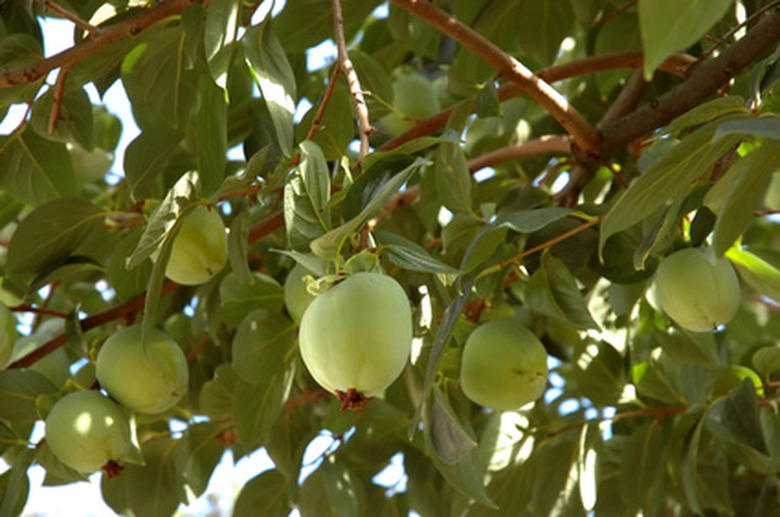Roundup Tree Damage
Roundup is a brand of herbicide containing the active ingredient glyphosate. Roundup is non-selective, which means it is designed to kill all vegetation. Determining whether a tree has been damaged by Roundup requires knowledge of prior spraying practices and close attention to subtle symptoms.
How Roundup Enters Trees
Roundup can enter trees through leaves and suckers at the base of the trunk. It can also be absorbed through the thin bark of young trees with trunk diameters smaller than 5 inches. There are even times when roots of two separate plants grow together, and Roundup is transferred. This typically only happens with plants of the same genus.
- Roundup is a brand of herbicide containing the active ingredient glyphosate.
- Roundup is non-selective, which means it is designed to kill all vegetation.
Short-term Roundup Damage to Trees
Within a week of being sprayed with Roundup, tree leaves often yellow or develop yellow spots. The extent and type of discoloration will be affected by how much chemical came in contact with the leaf. If people are not aware that a plant has been sprayed with Roundup, the symptoms might be confused with an iron deficiency. The leaves eventually drop.
Long-Term Damage to Trees
Tree exposed to Roundup late in the growing season can go dormant and not show signs of damage until the following spring. These trees take longer to leaf out, and their foliage is small and thin. High concentrations can also lead to fewer blooms.
- Within a week of being sprayed with Roundup, tree leaves often yellow or develop yellow spots.
Considerations
Use a tank sprayer for targeted Roundup applications around trees. Avoid high-pressure settings that may cause the chemical to splash up from the ground. Do not spray Roundup or other herbicides on windy days, because spray drift will burn desirable plants.
Low-growing branches of mature trees are often hit with drift when surrounding weeds are sprayed. When defoliation occurs it actually prevents absorption of Roundup during future applications.
Follow indications on the label regarding trees with exposed roots. It is also wise to avoid spraying the area under a tree's widest branches, known as the drip line. There is a higher chance root tips will come in contact with Roundup here.
- Use a tank sprayer for targeted Roundup applications around trees.
- Do not spray Roundup or other herbicides on windy days, because spray drift will burn desirable plants.
Additives
Specially designed dyes can be purchased and mixed with herbicides. This helps users keep track of where they are spraying, so they can avoid overlapping areas.
If You Accidentally Spray a Tree With Roundup
Immediately wash wet Roundup from all tree surfaces with plenty of fresh water. This will diminish the chances of it being absorbed.
If the Roundup has had a chance to dry, and you see minor foliage burn, the only thing you can do is trim the damaged areas. Robust trees will come back from minimal contact, if given time.
